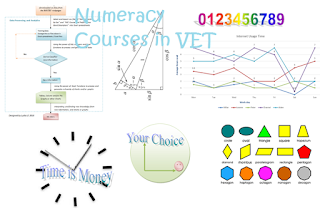Numeracy Activity
Using Wooden Sticks in Learning Solving Numeracy Problems of Mine Workers' Transport Vehicle - Version 1
By Lydia Le
My Learning at CSU
QUESTION
A mine workers' transport vehicle can carry 36 workers. All workers need to be transported to the mine daily across a 90 minutes periods: 6.30-8.00 in the morning, and 4.00-5.30 in the afternoon. The round trip takes 15 minutes. If 1134 workers need to be transported every day, morning and evening, how many vehicles would be required assuming the mine vehicles are the only option for workers to get to the worksite?
SOLUTION
My working on this question includes three steps through two parts: Part 1 focuses on my Planning, and Part 2 focuses on my Action.
PART 1- PLANNING
In this part, my aim is to plan a procedure of steps to find three key features of
*the total number of round trips needed,
*the maximum number of trips that a vehicle can transport/operate within 90 minutes, and
*the minimum number of vehicles which are needed to transport all mine workers to the mine worksite.
These features will be determined through the procedure of three sessions of steps as below.
Step 1-Finding the total number of round trips needed.
In this session of the first step, I consider knowing and working out the total number of round trips, also called trips in this activity, which are required/needed to transport all mine workers to the mine worksite.
Step 2- Finding the maximum number of trips that a vehicle could operate/transport within 90 minutes.
In this session of the second step, after knowing the total trips needed from Step 1, I consider knowing and working out the maximum number of trips that a vehicle could transport within 90 minutes.
Step 3- Finding the minimum number of vehicles needed.
In this final session of the third step, I consider finding out the minimum number of vehicles that is required/needed to achieve all trips required (which found at Step 1).
With this planning, my Action concentrating on three steps above will be illustrated in next part.
PART 2- ACTION
Based on three steps above, in this Part 2, my detailed approach and calculations are as below.
Let's start
Step 1
The total number of trips = 1134 workers ÷ 36 workers per trip = 32 trips (1).
(Notes: 31 trips with full 36 workers and 1 trip with 18 workers. This may develop further interesting issues such as rearrangements of numbers of workers between vehicles).
At this point, I will find real objects to represent 32 trips. For example, I would collect 32 wooden sticks, and put each stick to represent one trip.
Step 2
The maximum number of trips that a vehicle could transport within 90' = 90' ÷ 15' per trip = 6 trips (2).
I have set that one stick stands for one trip. So with six trips that a vehicle can operate/transport, it needs six sticks.
In other words, at this stage, I know that for each vehicle, I need six sticks standing for six trips. It means that 6 sticks are the maximum number of sticks which can be put in one group to represent one vehicle.
Step 3
The minimum number of vehicles needed = (1) ÷ (2) = 32 trips ÷ 6 trips = 6 vehicles (5 vehicles with full 6 trips, and 1 vehicle with 2 trips. See my following explanation)
This result is found by putting 32 the wood sticks in groups of 6.
A reminder here: each group of 6 sticks is to represent one vehicle with the maximum of 6 trips. The remainder of sticks will put in an extra group to represent an extra vehicle [each stick stands/represents for one trip].
As a result, I have 5 groups containing 6 sticks and 1 group containing 2 sticks.
Clearly, having 6 groups means that I need 6 vehicles. Now I can visually recognise that the vehicles from #1 to #5 will operate/transport 6 trips, and the vehicle #6 will operate/transport 2 trips only. See the image below.
As mentioned, the above image shows that the group #6 or the vehicle #6 has only 2 sticks or 2 trips respectively. Therefore, from this point, I can play some games by moving the sticks around between these six groups [i.e six vehicles], for making new decisions. This allows and opens new options in scheduling to manage the vehicles and their trips. For example, if moving one stick from the group/vehicle #1, one stick from the group/vehicle #2, then put them to the group/vehicle #6, then the numbers of trips operating by the vehicle #1 are now reduced to 5 trips; the numbers of trips operating by the vehicle #2 are also reduced to 5 trips; but the numbers of trips operating by the vehicle #6 are now increased to 4 trips.
Further from this point, if in the morning session, for example, the vehicle #3 operated all 6 trips, then in the afternoon session, I would reduce the numbers of trips for this vehicle. This would create a better working environment in terms of reducing the stress levels for both drivers and mine workers in their working context.
RECAP: Six (6) vehicles would be required.
Note that mine workers need time to get on and get off the vehicles. This factor, of loading and unloading workers, is ignored in this activity. In reality, time for loading and unloading needs to be considered.
and more detailed information can be viewed @







